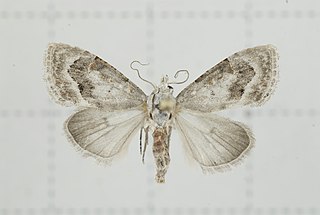Labanda is a genus of moths of the family Nolidae erected by Francis Walker in 1859.
Dunira is a genus of moths of the family Erebidae. The genus was described by Moore in 1885.
Mecodina is a genus of moths of the family Erebidae first described by Achille Guenée in 1852.
Tadaxa bijungens is a moth of the family Noctuidae first described by Francis Walker in 1865. It is found in Sri Lanka.
Saroba pustulifera is a moth of the family Noctuidae first described by Francis Walker in 1865. It is found in the Indian subregion, Hong Kong, Thailand, Sundaland, Sulawesi and Sri Lanka.
Themaca comparata is a moth of the family Erebidae first described by Francis Walker in 1865. It is found in India and Sri Lanka. It is sometimes placed in the genus Artaxa.
Casama vilis is a moth of the family Erebidae first described by Francis Walker in 1865. It is found in Sri Lanka, India, Middle East, Ethiopia, Kenya and Somalia.
Euproctis semisignata is a moth of the family Erebidae first described by Francis Walker in 1865. It is found in India and Sri Lanka.
Laelia fasciata is a moth of the family Erebidae first described by Moore in 1883. It is found in Sri Lanka, India and Myanmar. One subspecies is recognized, Laelia fasciata rubripennisMoore, 1884.

Craniophora fasciata is a moth of the family Noctuidae first described by Moore in 1884. It is found in Sri Lanka, Japan, Korea, Taiwan, Thailand and Australia.
Feliniopsis opposita is a moth of the family Noctuidae first described by Francis Walker in 1865. It is found in Kenya, Somalia, Sri Lanka and India.
Giaura tortricoides is a moth of the family Nolidae first described by Francis Walker in 1865. It is found in Sri Lanka, Japan, Andaman Islands, Borneo, Sumatra, Flores, Sulawesi, New Guinea, Bismarck Islands and Australia.
Lasiolopha saturata is a moth of the family Nolidae first described by Francis Walker in 1865. It is found in Oriental tropics of India, Sri Lanka, Thailand, New Guinea and Australia.
Aiteta damnipennis is a moth of the family Nolidae first described by Francis Walker in 1865. It is found in Sri Lanka, India, Peninsular Malaysia, Sumatra, Borneo and Sulawesi.
Labanda chloromela is a species of moth in the family Nolidae first described by Francis Walker in 1858. It is found in Sri Lanka.
Labanda herbealis is a moth in the family Nolidae first described by Francis Walker in 1859. It is found in Sri Lanka and Borneo.
Labanda saturalis is a moth in the family Nolidae first described by Francis Walker in 1865. It is found in Indo-Australian tropics of India, Sri Lanka, and from New Guinea to the Solomon Islands.
Labanda semipars is a moth in the family Nolidae first described by Francis Walker in 1858. It is found in Sri Lanka.

Nola fasciata is a moth of the family Nolidae first described by Francis Walker in 1866. It is found in Indo-Australian tropics of India, Sri Lanka to Borneo, Taiwan, New Guinea and Australia.
Nola lucidalis is a moth of the family Nolidae first described by Francis Walker in 1864. It is found in the Indian subregion, Sri Lanka, Borneo, Java, the Philippines and Taiwan.

